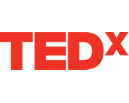 Researcher Jeremiah Owyang has spent the last few months outlining the “Collaborative Economy,” a forward-thinking model for how businesses of the future will operate. At LeWeb London 2013, Jeremiah gave a presentation outlining the corporate opportunity and structure of this new collaborative economy.
To distill the collaborative economy idea, is too stand back and look at the expansive opportunities for better, capital, service and product management. It means to look at unused or underutilized products and services, and maximize their opportunity for use.
This could even mean human capital, which bears the question: Are you properly leveraging the expertise of your workforce? Having a hard time visualizing the expertise of your enterprise? All of these questions fit into the collaborative economy discussion, to learn more, continue reading below.
Researcher Jeremiah Owyang has spent the last few months outlining the “Collaborative Economy,” a forward-thinking model for how businesses of the future will operate. At LeWeb London 2013, Jeremiah gave a presentation outlining the corporate opportunity and structure of this new collaborative economy.
To distill the collaborative economy idea, is too stand back and look at the expansive opportunities for better, capital, service and product management. It means to look at unused or underutilized products and services, and maximize their opportunity for use.
This could even mean human capital, which bears the question: Are you properly leveraging the expertise of your workforce? Having a hard time visualizing the expertise of your enterprise? All of these questions fit into the collaborative economy discussion, to learn more, continue reading below.
[For the entire article click here]The Collaborative Economy Enables Resiliency for Corporations
Above Image: Bamboo is resilient by being both rigid in maintaining its structure, while also being flexible enough to bend during a variety of weather patterns. Most of the coverage of the collaborative economy has focused on what it means for consumers (Airbnb, Lyft, Uber) but what does it mean to corporations? This post will answer that question. Companies that tap the crowd for instant workers (oDesk, Taskrabbit for business) or unlocking their idle inventory to become revenue generating (Liquidspace, Shardesk) or tap the crowd for new services (Crowdspring, Uservoice) can benefit from reducing costs –and unlocking new business potential.
[Corporations that tap the crowd can benefit from new products, unlock idle inventory, and reduce risk] Over the past few months, I’ve been focused on the collaborative economy, the next phase of social business that involves the sharing of goods and services. In prior posts, I’ve discussed how it’s impacted the luxury vertical, and even goods and products, but now, let’s explore how it impacts a corporations workforce, talent, and resources. To describe the movement, which we call the collaborative economy, I defined it as: An economic model that means shared ownership and access between corporations and the crowd.
Here’s a five examples of how companies can tap the crowd in many business functions:
- A company can tap into a workforce on-demand using Taskrabbit for business, or oDesk for coding, office admin, writing, and pretty much any services.
- A company can instant-lease their unused desks at their corporation that are not used to travelers or other companies who need meeting and workspaces using Sharedesk, Liquidspace, Pivotdesk, and more.
- An executive who needs a quick, clean, place to work in NY can quickly gain access to a Breather room, hosting meetings on demand, or access an Uber to get to a key meeting.
- Marketers who want to infuse consumer created content that’s trusted and cheap can use Mass Relevance, LiveFyre, or About Echo to integrate social into their digital marketing on-demand.
- Research & Development teams can tap into the crowd to generate new ideas for products using Uservoice, Salesforce Ideas, or listening to their communities in Communispace, Passenger or Vision Critical
Four Impacts to Corporations as they join the Collaborative Economy But what does this mean? I see at least four major impacts to organizations, which include: Companies can radically expand and contract workforces. Popup companies mean corporations can assemble a team on-the-fly at low cost and lower risk. For most companies, staffing is the highest cost of operating. Companies who properly tap into this on-demand workforce can always stay ‘right sized’ by growing staff on demand as needed. Expect new forms of contract groups to emerge that work well in tightly collaborative teams, akin to virtual agencies. Expect the future of work to continue to move towards individual enablement, future workers can serve many masters as they focus on specific niche skills. Expect that knowledge management, core institutional knowledge, and a team to look long term to drive company strategy to still be key in-house resources. Activate unused resources, generating new revenues. Companies can generate new revenue by activating unused inventory, both capital expenditure such as unused real estate, but also outsourcing idle workers into workplace marketers –serving other partners and corporations. Often, physical locations are the second highest cost to corporations second to staffing, and they can utilize these crowd resources by: Activating their idle locations and rent on-demand to other partners and corporations, utilizing resources, or two, renting from others, reducing overhead and liability of managing many properties. Expect the Regus model to eventually be extended to management consulting firms, companies with seasonal businesses or companies that have many locations like retail, or more. Reach new markets through new business models. Corporations that have idle resources, inventory, or products, can activate these resources and rent to new markets on demand. For example, Bloomingales, Nordstrom, and other high end retailers can benefit from replicating the business model of Bag Borrow and Steal which makes high end purses available to a new class of consumer on demand. Don’t sell a product once, sell it a hundred times. I’ve listed out many new models emerging just for the luxury market. Additionally, corporations that have idle inventory such as food, can shift to Eat Feastly, a growing consortium of local chefs at home, or idle cars on dealership lots can be put to rent like Toyota Rent a Car or BMWs version. Tap the crowd for new innovation of goods and services. Getting and keeping creatives is difficult, so instead, seek new models that enable desk sharing that bring creatives to work on their own time at your office, spreading some of their ideas and energy to those around them. Pepsi who used Mass Relevance was documented in tapping into the broader crowd by aggregating their messages to improve digital and real-world marketing. Or take models like Kickstarter or Quirky that tap the crowd to fund –and source new ideas the next form of innovation. Software providers like, Spigit, Crowdtap, BrightIdea, a also enable corporations to glean these opportunities on their own branded platforms.
Top Photo Credit: jairoagua cc

